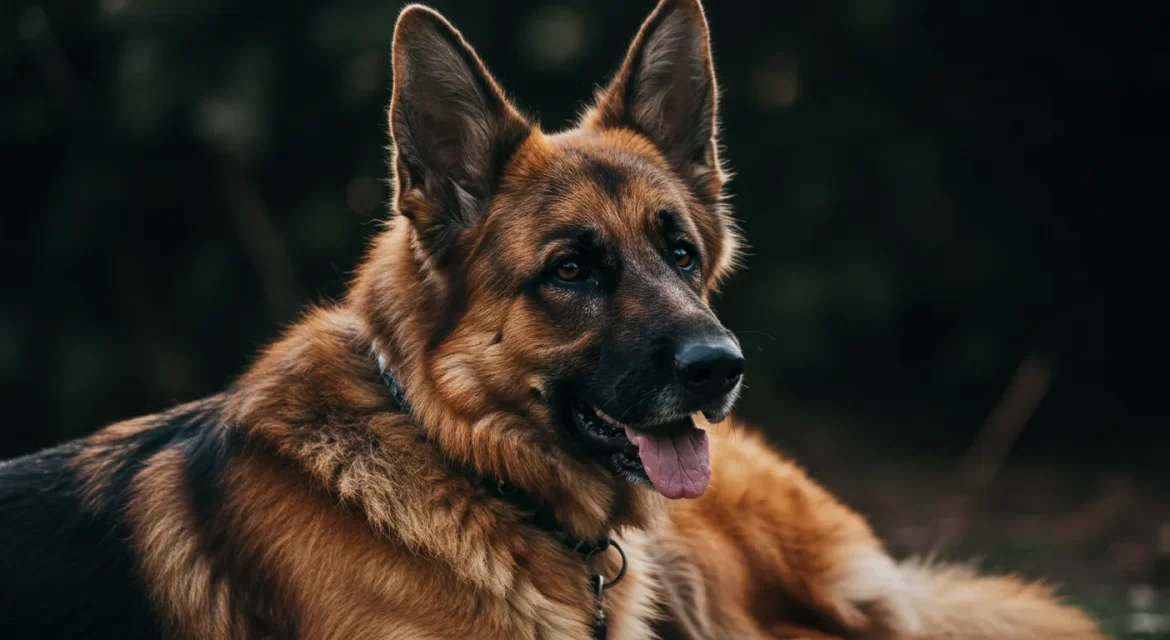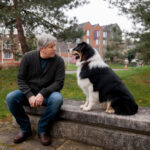Your German Shepherd might be getting older, but their need for movement, fun, and mental engagement hasn’t faded; it’s just evolved. As they enter their golden years, the right kind of regular exercise can help them stay strong, sharp, and full of life.
Senior German Shepherds are still eager to explore, sniff, and play, they just need activities that match their changing pace and comfort level. Whether your dog is 7, 9, or even 12, staying active helps support joint health, reduce anxiety, and maintain a healthy weight.
In this blog, we’ll guide you through how much exercise does a German Shepherd need, why it matters more than ever, and share 10 of the best low-impact, joint-friendly exercises to keep them physically and mentally fit. Each one is tailored to help your aging pup stay engaged, happy, and healthy, because age should never be a barrier to a great day.
How Much Exercise Does a Senior German Shepherd Need?
Senior German Shepherds (around 7 years and older) need about 30 to 60 minutes of exercise per day, split into 2–3 shorter sessions. This should include a mix of gentle physical activity, like walking or swimming, and mental stimulation, such as puzzle toys or scent games. Avoid intense running or jumping, as it can stress aging joints.
Always observe the condition of your dog; if they seem stiff, tired, or reluctant to move after exercise, it may be a sign to reduce the duration or intensity. On the flip side, if they’re still bright-eyed and looking for more, add in short bursts of mentally engaging games to keep them sharp without overdwhile others prefer lounging more than leaping. The key is balance, consistency, and joint-friendly activities, which the exercises below are designed to provide.
Why Exercise Matters for Senior German Shepherds
German Shepherds are high energy dogs, so they need plenty of exercise. As this dog breed ages, changes in metabolism, muscle mass, and cognitive function can affect their overall health and vitality. That’s why senior German Shepherds require regular, appropriate movement to maintain their overall quality of life.
Here’s how a good amount of exercise routine helps:
- Prevents obesity-related health issues
- Supports joints and prevents stiffness
- Boosts cardiovascular health
- Provides mental enrichment to keep their minds sharp
- Helps with early detection and management of age-related issues
- Improves mood and prevents boredom or anxiety
Tip: A tired dog isn’t always a healthy dog. Exhaustion can mean overexertion. Focus on low-impact, rewarding activity instead of high energy burns.
Top 10 Best Exercises for Senior German Shepherds
German Shepherds are strong, energetic dogs, but once they hit their senior years, their exercise needs change. High-impact or long sessions can be too much for aging joints and muscles. That doesn’t mean they should stop moving! In fact, staying active is one of the best ways to keep your senior Shepherd healthy and happy, ensuring their well-being.
Here’s a list of the best exercises for senior German Shepherd dogs that focus on low-impact, joint-friendly activities your dog will enjoy. These exercises help maintain muscle tone, flexibility, and brain health, all essential for aging dogs.
1. Daily Walks
Daily walks can be a great exercise, even for senior dogs. Keep them slow and steady, around 15 to 30 minutes, depending on your dog’s stamina. Going for a walk can be a daily exercise. Walking provides low-impact cardiovascular exercise, keeps joints moving, and offers mental stimulation through new sights and smells. If your dog seems tired, break the walk into two shorter sessions. Always watch for limping or discomfort and adjust accordingly.
2. Swimming (Take a Plunge)
Swimming is a low-impact exercise ideal for older German Shepherds with joint issues like arthritis. The buoyancy of water supports their weight, reducing stress on hips and knees while providing a full-body workout. Hydrotherapy sessions guided by a professional can help improve muscle strength, circulation, and flexibility in a safe environment. Start slow and keep sessions short, about 10 to 15 minutes, and always supervise closely.
3. Short Hikes on Easy Terrain
If your dog is up for it, gentle hikes on flat or slightly uneven ground provide great mental stimulation and mild exercise. Keep hikes under 45 minutes and avoid steep or rocky trails to prevent joint stress. Bring water and monitor your dog closely for signs of tiredness or stiffness. This is a wonderful way to change up their routine and expose them to new environments.
4. Canine Pilates and Balance Exercises
Balance and core strength become more important as dogs age. Canine Pilates exercises, guided by a trained professional, focus on slow, controlled movements that improve stability and prevent falls. These exercises might include standing on wobble boards or gentle weight shifts, helping maintain muscle tone around joints. Short sessions 2–3 times a week, can make a big difference.
5. Interactive Puzzle Toys
Senior German Shepherds benefit from mental challenges just as much as physical activity. Puzzle toys that hide treats or require problem-solving keep your dog’s brain active and healthy. These games also reduce boredom and anxiety, which can be common in less active older dogs. Spend 10-20 minutes a day with these toys to keep your dog’s mind sharp.
6. Indoor Obstacle Courses
When the weather isn’t great, indoor obstacle courses are a fun alternative. Use pillows, boxes, or low furniture for your dog to navigate around or step over. Keep the obstacles easy and safe to avoid injury. These courses improve coordination and provide both mental and physical stimulation, making indoor days more interesting.
7. Modified Tug-of-War
Tug-of-war can be a gentle and fun game for senior dogs when played carefully. Use soft toys and avoid strong jerks that could strain joints or damage teeth. Keep the game light and let your dog win sometimes to keep it enjoyable. Short sessions help strengthen neck and shoulder muscles while providing bonding time.
8. Chase a Lure (Flirt Pole)
A flirt pole is a long pole with a lure attached that your dog can chase in quick, controlled bursts. This activity offers exciting play that taps into your dog’s natural prey drive without pushing them too hard physically. Limit the sessions to around 5 to 10 minutes and avoid fast sharp turns or high jumps that could stress joints. It’s a great way to keep your senior dog mentally sharp and physically active in a safe, controlled manner.
9. Nose Work and Scent Games
German Shepherds have an extraordinary sense of smell and love using it to explore. Hide treats or favourite toys around your home or garden and encourage your dog to find them using their nose. This kind of scent work stimulates their brain, promotes gentle physical activity, and provides mental enrichment that’s perfect for senior dogs. Start with easy hiding spots and slowly increase the difficulty to keep your dog engaged and motivated.
10. Play fetch
Fetch is a timeless game that can be easily adapted for older dogs by using soft toys and throwing them only short distances. This helps prevent strain on joints and muscles while still providing mild cardiovascular exercise. Keep play sessions brief and pay close attention to your dog’s energy levels and any signs of fatigue or discomfort. Fetch also encourages quick reflexes and interactive fun without overexerting your senior companion.
Bonus Tips for Senior German Shepherd Exercise
- Always monitor your dog’s comfort: If your dog shows signs of pain or stiffness, modify or stop the activity.
- Prioritise rest: Older dogs need more downtime, so provide cozy beds and quiet spaces.
- Nutrition matters: Senior dogs benefit from joint-supporting supplements and balanced diets.
- Regular Vet check-ups: Regular vet visits help tailor an exercise plan that fits your dog’s health needs.
Signs Your Senior German Shepherd Needs a Modified Exercise Plan
Before jumping into exercises, watch out for these signals that your dog needs gentler activity:
- Limping or stiffness after activity
- Excessive panting or fatigue during short walks
- Reluctance to climb stairs or jump
- Behavioural changes such as irritability or withdrawal
- Difficulty getting up after resting
If you notice any of these, it’s time to adjust the routine and possibly check in with your vet.
Conclusion
Getting older doesn’t mean slowing down to a stop; it means moving differently, more thoughtfully, and with care. For your senior German Shepherd, the right exercise routine can mean the difference between just growing old and truly enjoying their golden years.
By incorporating gentle walks, stimulating scent games, and joint-friendly activities like swimming or indoor play, you’re not just supporting their physical health, you’re nurturing their spirit. Every wag, sniff, and happy trot is a sign that your senior Shepherd still has so much life to enjoy.
So take it day by day. Pay attention to their signals, keep the fun going, and always lead with love and patience. With the right balance of activity and rest, your older German Shepherd can continue to thrive, proving that age is just a number when joy and movement are still part of everyday.
Because no matter their age, they’ll always be your loyal, playful companion, ready for the next adventure by your side.




